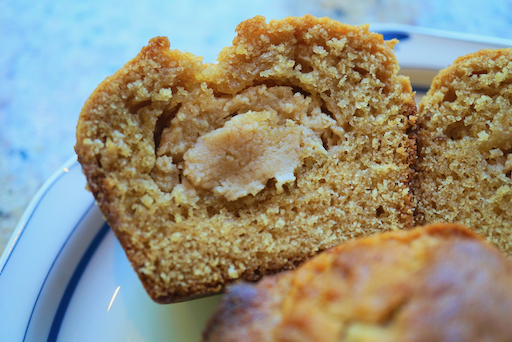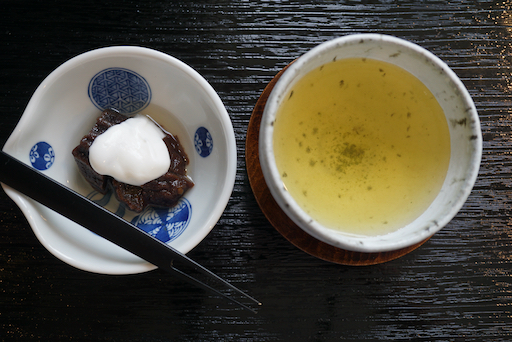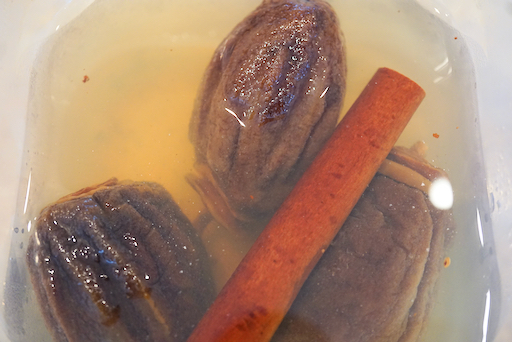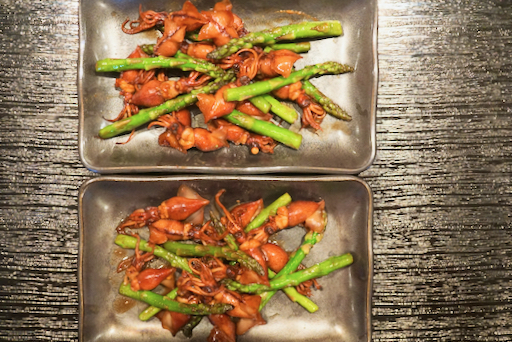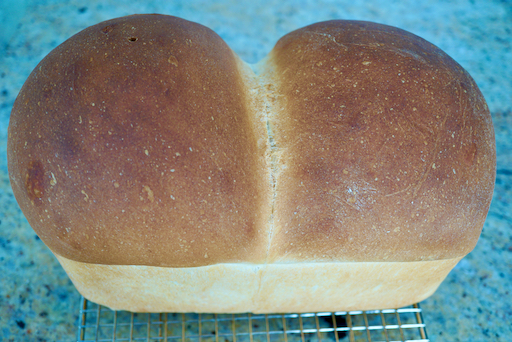This is another one of my wife’s muffin projects. The original muffin recipe came from “Mostly Muffins” published in 1984 which we rediscovered recently tucked away on a bookshelf. The original recipe used peanut butter in the dough and called for a stuffing made of semi-sweet chocolate chips made into a fudge. (The peanut butter chocolate combo reminiscent of Reeses Butter Cups?) But my wife thought that a stuffing of chocolate candy would be too sweet for us so she came up with a stuffing made of a mixture of cream cheese and peanut butter. We have jars of peanuts used to feed squirrels but we did not have any peanut butter. So we ended up making peanut butter as well. (Sorry squirrelys) The muffin came out nice and very peanut-y.
For muffin
1 2/3 cups AP flour
1/2 cup brown sugar
1 Tbs. baking powder
1/4 tsp. salt
3/4 cup milk
1/2 cup peanut butter
1/3 cup peanut oil (to accentuate the peanut flavor. Vegetable oil is OK too.)
1 egg lightly beaten
2 tsp. vanilla
for peanut butter filling
1 block cream cheese
enough peanut butter to bring the total weight of the cream cheese and peanut butter to 225 gm.
2 tsp. sugar
2 tsp. salt
For chocolate fudge filling (I did not use this but it is another alternative filling)
1/3 cup semisweet chocolate chips
1 tbs. butter
In a small saucepan melt the chocolate chips and butter until melted then set aside
Directions:
To make the peanut butter filling: Put the peanut butter (#1) and cream cheese in a stand mixer with a paddle and beat first on lower speed to incorporate. Add the sugar and salt and beat on a higher speed to whip until light and slightly fluffy. Set aside
for the Muffins:
In a bowl mix the dry ingredients (from flour thru salt). In another bowl mix the wet ingredients (i.e the rest of the ingredients) (#2). Put 1/2 of the dough into the bottom each of 12 heavily greased muffin tins (2nd smallest scoop). Top with about 16 gm of the peanut butter filling (smallest scoop). Make sure none of the filling touches the side of the muffin tin. Cover the filling with the remaining batter (#3). Bake in a 400 degree oven for 15 to 20 minutes until the surface feels firm when lightly touched. Cool 5 minutes before removing from the tins.


